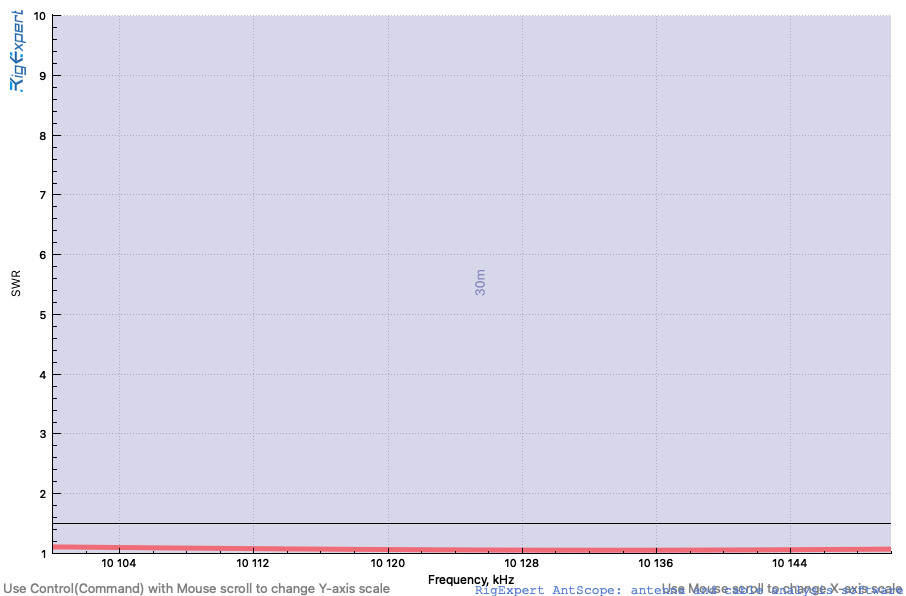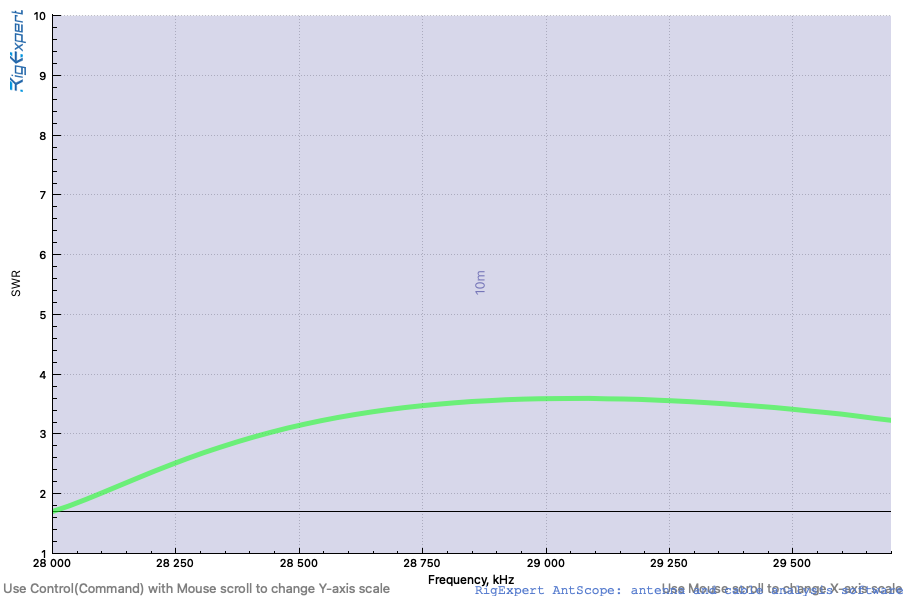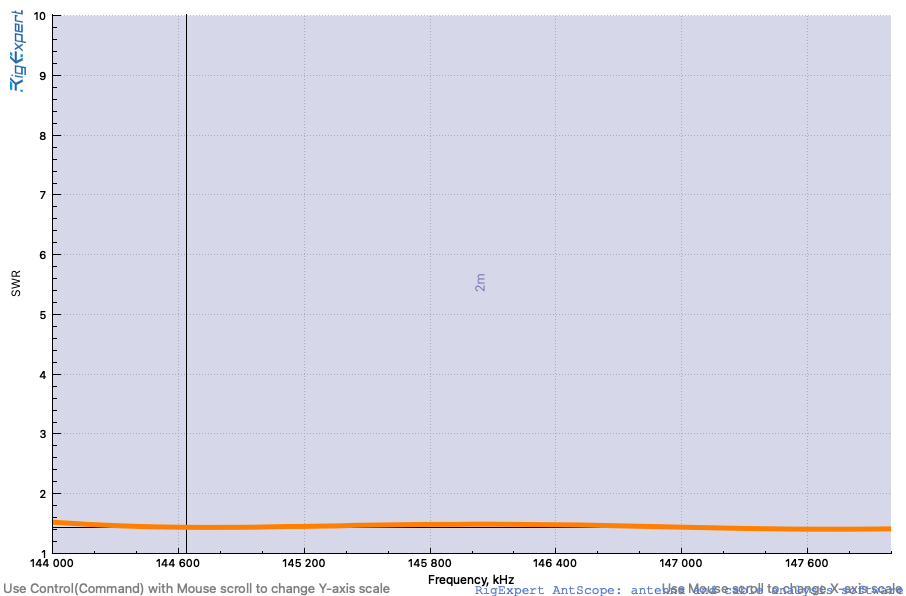Why Do I Need A New Antenna?
When I started my ham radio journey, I lived in a suburb of Philadelphia. The house was a twin that sat at the convergence of three hills. Essentially, it was in a depression or, well, crater. It was also a corner lot with power lines running both ways. If I’d wanted more RF noise I wouldn’t have known where to start to create it. In the midst of this, I put a diplole antenna running the length of the attic. It wasn’t stellar. But then again, it was 2017 and the solar cycle wasn’t doing anyone any favors even with good setups.
A lot has changed since then. When we moved to Ohio, I strung the same dipole in the attic and went back to business as usual in the new QTH. It wasn’t much better than before. This is not a surprise. But I got into POTA and started doing a lot of portable operating. In fact, the bulk of my contacts over the last 3 years have been from my portable station. It’s been wonderful! I ended up not paying a lot of attention to just how poorly my attic dipole was performing.
The dipole in question is tuned for 40 and 20-meters. It’s from MFJ and it does what it does. But it’s not very versatile and it’s inside the house. That’s great for some things but getting out or being flexible aren’t really on the menu.
What To Do?
I don’t live in a place with restrictions on antennas but I also don’t live on some massive plot of land in the middle of nowhere. I’m still on something akin to a hillside, but it’s not nearly as dramatic as at the old place. A vertical seemed like a good idea since I didn’t really have a place to hang a dipole that would work. Enter the DX Commander Classic 2.
The Cons
Let’s start with the liabilities, shall we? The place where I can put a vertical is on the side yard of my house. The space between the house and the neighboring fence is about 40 feet. Running front to back (E-W) there is a long stretch to the road and then a shorter stretch to the fence that contains the backyard and associated dogs. It’s a weird rectangle and the overhead space is odd as well because of the house and several trees that I don’t control. That means the position of the antenna is dictated by, as always, Not Me.
The other cons? I dunno yet. We’ll give it some time.
The Pros
A vertical has a small footprint and is easy to mount in a semi-permanent fashion. I can put a spike in the ground and position the antenna on top of it if I so choose. I can also just guy it out and hope for the best. Lots of options.
With 6 elements, it covers 40, 30, 20, 17, 15, 12, 10, 6, and 2-meters. That’s a lot of bands. It’s so much more flexible than my string o’ wire in the attic that it really can’t do much other than improve my situation. It is also easier to set up, take down, get to, and maintain. Lots to like here.
The thing is also really easy to put together and remarkably tolerant when it comes to installation. Another win for THIS vertical.
The Plan
This is the part where I should be talking about how I took measurements and planned out the orientation of everything. Instead, after months of thinking, “I should do that this summer or something” I grabbed my phone and placed a pick-up order at DX Engineering. That is the blessing and curse of being 20 minutes from the largest ham radio equipment dealer in the country (world?). It’s just so easy to click buttons and drive over to pick things up. I ordered the DX Commander Classic 2, a window passthrough panel from MFJ, and a bag of turf staples to hold down my radials and that was that.
The Big Decision
The DX Commander Classic 2 comes with the option to replace the 30-meter element with an 80-meter element. This is done by making an inverted-L using a nearby tree or other support. I don’t really have a great place to do that. I’m sure I could make it work, but I’m also sure that I’d use 30-meters more than 80. That was the only real decision that was required prior to sitting down and putting it together.
The Build

This antenna is probably the least frustrating assembly of anything I’ve done lately. I can’t remember anything else just kind of going together and working quite like this. The mast is really simple. There are clamps to put in place to make sure the segments don’t fall down. There are also spacers that need to be put over the mast to hold the elements in place. No stress there. In fact, even the base with all of its wingnuts and whatnot is just threading screws. The entire assembly of the hardware took less than 15 minutes (the clamps have screws and I have clumsy fingers).

The instructions include a cut chart. Not frequencies and wavelengths and cool math stuff. Just a list of “Cut it here” lengths and a couple of spools of wire. My daughter and I went onto the driveway and pulled out a tape measure. We measured the wire and cut it to length. Then I crimped fork connectors onto the ends and shrink-wrapped them. That’s it.
Stringing the elements to the mast is also very simple. The forks are attached to the base with wingnuts and then the elements are strung up through the various spacers. When they get through the last spacer, there is a tiny foldback into a loop that is then either taped or shrinkwrapped in place. Some shock cord is then run through the next available element, tied off, and a stopper knot put in place to keep the cord attached to the element. The element stays tight and nothing flops around in the wind.
With all of that done, it gets set up and guyed out. Again, my daughter came to my rescue and held the mast while I tied off the guy lines. With it up, I attached some radials and…that was it?

The approach the maker takes to radials seems controversial, I guess. Math supports him and physics is what it is. There is a minimum amount of wire you need for radials and then you hit a point of diminishing returns. I used enough to cover my space.

Huh… I mean… Wow.
With the antenna up and the radials deployed, I plugged it in to my RigExpert Stick Pro. I was kind of dumbstruck. All of the bands except 10-meters and 6-meters were at or below an SWR of 1.5:1 out of the box. Even 30-meters was practically 1:1. The 20-meter element is going to get some attention because it’s a bit long according to my measurements on the RigExpert but it is not a big deal. I’ll probably only take off an inch if I feel like it. In truth, the tuner will take care of that without any sweat at all.
To give some perspective, here are the AntScope2 readings for the bands covered by the antenna with NO TUNING adjustments. These are the elements installed as per the cut chart in the instructions.









Did I mention this thing tunes 2-meters like an antenna that should be able to use 2-meters? I’m sure it’s not great, but… Well, no I’m not sure of that. I will need to hook up a 2-meter rig and see what I can hit with it. Why not?
I will say, I had an Oh No! moment when I hooked it up to my IC-7100 to get on the air. With everything in place, I played with FT8 for a minute or two. But…the tuner didn’t kick in. The radio was happy enough with things as they were which was unexpected. Engaging the tuner manually got me down to 1.1:1 on my SWR meter and, well, that was that. The tuner is NOT doing a lot of work here. After I took it down and tuned up some of the elements, 10 and 6 improved quite a bit. All of the bands are quite healthy!
Current Thoughts
There are no final thoughts for this post. This is going to be something that I study for quite some time. I will say that my initial impressions are good. Incredible, really. I didn’t expect it to work this well without a lot of fiddling with things. But as Callum M0MCX says, it’s not like physics is going to change between his shop and my yard. The rules are the rules.
With new bands available to me, I’m going to spend some time on CW and FT8 and see how I do. I’ve already had some great contacts like Japan on 17-meters with 15 watts on FT8. I’m excited to get out and do some POTA hunting and up my game with my CW from home. I’m genuinely delighted with the out of the box performance of this antenna. It’s like starting the hobby all over again!
![]()
